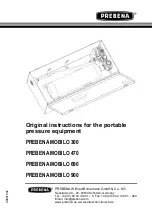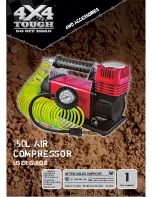
F
OR
M
ODELS
: JGI, JGM, JGN, JGP
AND
JGQ
S
ECTION
4 L
UBRICATION
PAGE 4-12
Dry Sump
T
ABLE
4-6 M
AXIMUM
A
NGLE
FROM
H
ORIZONTAL
A
LLOWED
IN
T
RANSIENT
M
OTION
WITHOUT
D
RY
S
UMP
FRAME
A
a. The JGI frame, vertical non-balanced compressor, is
not to be applied offshore.
THROWS
1 OR 2
4
6
JGM:N:P:Q
4°
N/A
N/A
JG
4°
2.5°
N/A
JGA
6.5°
3.5°
2°
JGW:R
1°
Use Dry Sump
b
b. Use dry sump, as noted, if compressor is to be subject
to transient motion.
N/A
JGJ
4°
1°
Use Dry Sump
2
JGH
3.5°
2°
N/A
JGE:T
4°
1.5°
1°
JGK
1°
Use Dry Sump
2
Use Dry Sump
2
JGC
4°
1°
Use Dry Sump
2
JGD
5.5°
2.5°
1°
JGZ:U
7°
4°
2.5°
JGB:V
N/A
2°
1.5°
KBB:V
N/A
1.5°
1°
Compressors subject to tran-
sient motion, roll and yaw on
board a ship or a floating plat-
form, may require a dry sump
(“dry” crankcase and separate oil
reservoir). See the table for lim-
its, which are based on the angle
where the crankshaft/connecting
rods will contact the oil level
causing foaming. The limits
assume that the running oil level
is maintained between one half
and two-thirds the height of the
sight glass when the frame is
perfectly level.
With a dry sump, drains are sup-
plied at each end of the compres-
sor frame and an additional oil
pump chain oiler is provided by
Ariel. The packager must provide
a lube oil reservoir sized and
located so that the oil pump has
oil suction regardless of the tilt of
the ship or floating platform. An
oil sump strainer must be installed in the pump suction line at the outlet of the separate lube
oil reservoir (unmounted strainer is provided by Ariel with a new dry sump compressor).
Refer to the Ariel outline drawings for connection sizes and locations.
















































